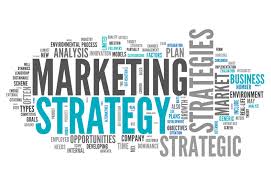by: Lidia Hovhan
When you think of marketing to seniors you may have typical beliefs such as increasing fonts and using pictures of old people. It really isn’t quite all that. These may be common features in many businesses but the trick to getting their attention is not just all about featuring those elements. Unlike popular belief, the baby boomer generation does spend a lot of time online and they are not so unlike other generations. However, there are some distinctions you should follow when marketing to an older demographic. 
Tip 1. Use Relatable Language
If you want to get the attention of someone, you have to speak their language. Marketing to seniors means eliminating teenage jargon, trendy language, and internet slang.
Unlike millennials who thrive on drama, baby boomers just want plain information. They want to know how your product or service is going to improve the quality of their life. It may seem traditional or old school but it is what they want.
Of course, you can still be creative and clever. You’ll just have to stop using words they are not familiar with and they didn’t grow up with. Avoid words that can confuse like “ROFLCOPTER” and “AIIGHT.” If you are making a joke with these it will only get lost to them and so will your joke and your sales.
Tip 2. Senior People Make Their Own Purchases
Seniors are not helpless and are totally capable of taking care of themselves including their needs. They can make their own decisions and like to make their own choices. Don’t assume that you need to speak to a third party such as a caregiving audience or a relative in order to sell your products.
Tip 3. They Don’t have the Same Criteria as Younger Generations
When you are selling a product or service to someone the main point is you are into selling the product but rather what the product will do for them. For example, if your product is a hair curler what you are selling are the curls it can create. The company that can convince people that they can make superior curls wins.
When it comes to seniors, they don’t necessarily want the same things a teenager wants, but that doesn’t mean they don’t want the same products. You’ll just have to discover why they would want it. It’s all about knowing their wants and needs so you can align your marketing to their goals.
Tip 4. Make it easy for them
Seniors didn’t grow up with the iPhone and other gadgets so requiring certain actions on a web page design or in an app can be a little bit challenging for them. They may need to learn a lot about hamburger menu is or whether it’s something they should be clicking on.
If you are marketing to a wider audience, requiring people to click on symbols or read the fine print may mean you will lose a huge portion of your potential senior customers. These are not just for seniors but for everyone; all can benefit from an easy, clear sales process.
Tip 5. Use Multi-Channel Marketing
Only 27% of adults 65 and over owned smartphones according to the Pew Research Center. This means more seniors live in the offline world and if you want to reach them you are going to have a harder time if you will simply rely on mobile and internet. If you want to reach a large part of your senior market you have to use multi-channel marketing by targeting them online and offline. You can use online marketing but a majority of your efforts should be where your market is found so adopting a mixture of offline and online marketing efforts, like having direct mail services, is the proper strategy. You may also consider email marketing automation to fast-track your marketing efforts, too.
Tip 6. Something Familiar
People want something familiar and are naturally drawn to it. Seniors have always received advertisements and physical catalogs in the mails so it makes sense to market to them through this channel. Older people want something physical or tangible to hold on to with their hands like a paper catalog. If you don’t’ have a catalog yet it is easy to print one over the internet. Catalog marketing isn’t dead and companies like Birchbox and Bonobos are starting to mail catalogs to their subscribers.
Tip 7. Personalized Experience
The customer service that older generations have come to know is good quality customer service that was always personal and automated or self-service was almost unheard of. A live person on the other end of the phone to talk to in the customer service department was always present. Personalized experiences are remembered for a long time and baby boomer are used to this personal touch. Make a lot of effort to add personalization to your marketing efforts. It can be as simple as having a live person respond to customer service inquiries with a simple phone call.
Tip 8. Trust
Make sure that you earn a senior’s trust. When you ask the or personal information make sure you have explained explicitly why such activities are necessary. Explain to them how it can help in their overall shopping experience. Give them the security that their personal information is safe and secure. Money back guarantees and testimonials also help foster trust in seniors and practically any client.
Tip 9. Visuals
Selecting images is important when marketing to seniors. Most people see themselves as 5-10 years younger than they actually are, so factor this in when selecting an image that goes with content. You must use images and visuals that are relatable to your audience.